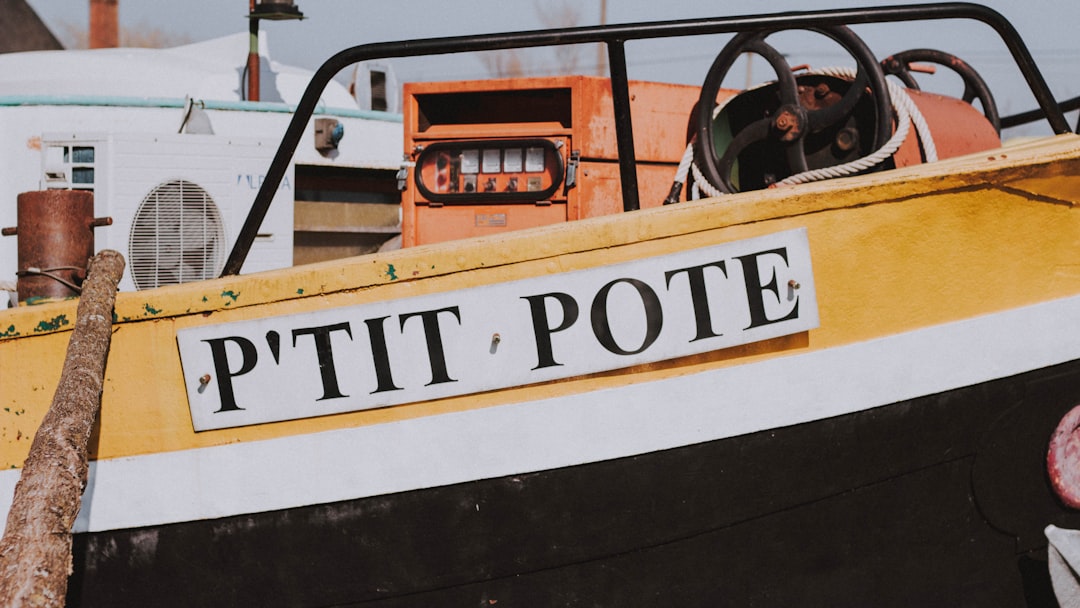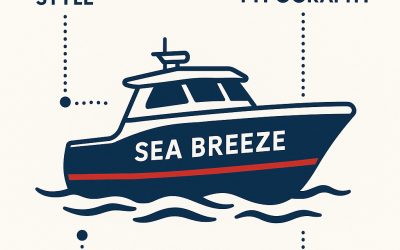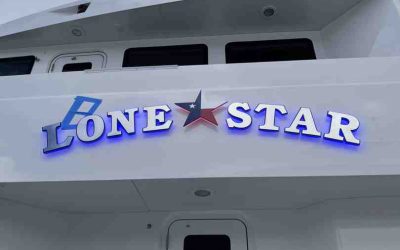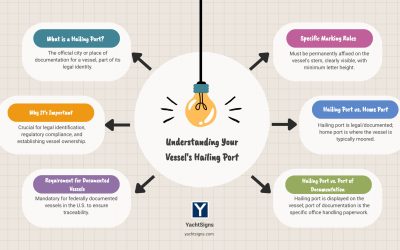Why Boat Name Changes Matter More Than You Think
A boat name change involves three critical steps: honoring maritime tradition through ceremonial rituals, completing legal documentation with authorities, and physically replacing the vessel’s signage.
Quick Overview:
- Traditional: Perform de-naming and christening ceremonies to appease maritime deities
- Legal: Submit proper forms to USCG (Form CG-1258) or Transport Canada (Form 13)
- Physical: Remove old lettering and install new yacht signage professionally
Whether you’ve purchased a pre-owned vessel with a name like “Princess Prudence” that doesn’t suit your style, or you simply want to refresh your yacht’s identity, changing a boat’s name is a process steeped in both ancient maritime tradition and modern bureaucracy.
The superstitious sailor community has long warned that renaming a vessel brings bad luck – unless you follow time-honored rituals to inform Poseidon and the four wind gods of the change. Beyond folklore, there are practical legal requirements involving coast guard documentation, state registration updates, and proper vessel marking compliance.
The physical change requires careful removal of old lettering (often leaving “ghost letters” behind) and professional installation of new signage that meets both aesthetic and regulatory standards.
I’m Cole Reilly, and through nearly two decades in the yacht lettering industry, I’ve guided thousands of vessel owners through the complete boat name change process – from traditional ceremonies to final signage installation. My experience spans over 10,000 custom yacht sign projects, ensuring each vessel’s new identity reflects both maritime heritage and owner sophistication.

The Seafaring Rituals: Honoring Maritime Tradition
Have you ever wondered why seasoned sailors get that worried look when someone mentions changing a boat’s name? It’s not just superstition – it’s a deeply rooted maritime tradition that has guided seafarers for centuries. The old salts will tell you that every vessel’s name is carefully recorded in Poseidon’s Ledger of the Deep, and changing that name without proper ceremony is like asking for trouble on the high seas.
This maritime folklore isn’t something we take lightly in the boating community. When you’re planning a boat name change, skipping the traditional ceremonies is considered an invitation for bad luck, rough weather, and mechanical failures. Think of it as maritime etiquette – you wouldn’t ignore the rules of the road on land, so why ignore the customs of the sea?
The heart of any proper boat renaming involves two sacred ceremonies: first, you must completely purge the old identity through a de-naming ritual, and then you welcome the new name with a proper christening. These aren’t just quaint traditions – they’re your way of formally notifying the sea gods about your vessel’s new identity and asking for their blessing on future voyages.
If you want the complete ceremony details with specific incantations and timing, you’ll find everything you need in this detailed guide to the ceremony.
The De-Naming Ceremony: Purging the Old Identity
Before your new yacht signage goes up, you need to completely erase every trace of the old name from your vessel. This isn’t just about removing the obvious nameboards – we’re talking about a thorough purge that would make a detective proud.
Removing all traces means exactly that. Every single item bearing the old name must disappear from your boat. Your logbooks need to go, along with life rings, maintenance records, keychains, old photos, and even receipts that show the previous name. If you’ve had vinyl lettering or painted graphics, those ghost letters that sometimes remain after removal need to be completely eliminated too.
The metal tag ritual is where things get ceremonial. Write the old boat name on a metal tag using water-soluble ink – this represents the entry in Poseidon’s ledger that needs to be erased. Gather your friends and family on deck for the solemn moment.
Reciting an ode to Poseidon is your formal request to update the cosmic records. A traditional address goes something like: “Oh mighty and great ruler of the seas and oceans, Poseidon, we implore you to expunge from your records the name [old boat name], which has ceased to be an entity in your domain.”
Then comes the symbolic moment – drop that metal tag into the sea and watch the water-soluble ink dissolve, representing the old name’s removal from the ledger. Finish with a generous pour of good champagne into the water, flowing from west to east as your final offering to close this chapter.
The Christening: Welcoming the New Name
Now for the fun part – introducing your vessel’s fresh identity to the maritime world. This christening ceremony is your boat’s official debut under its new name, and it’s definitely worth celebrating with style.
Your champagne offering kicks off the welcome ceremony. With a fresh bottle of quality champagne (trust me, the gods notice when you go cheap), gather everyone for the introduction ritual. Address Poseidon again: “Oh mighty ruler of the seas, we present this vessel, now and forever known as [new boat name]. We offer her to your care and protection, and ask that you guide her safely through calm waters.”
Pour another generous splash of champagne into the sea – this is your offering for the new name’s blessing.
Appeasing the four wind gods comes next, because these powerful forces control your vessel’s fate on every voyage. Face each cardinal direction with champagne in hand, offering specific prayers to each wind ruler.
Boreas, the North Wind, gets your first appeal as you face north: “Great Boreas, grant us your mighty breath to fill our sails and keep us safe from harm.” Zephyrus, the West Wind, receives your westward-facing request for “gentle breezes to push us homeward with fair weather.”
Turn east for Eurus, asking this wind ruler for “steady currents to guide us true and protect us from sudden squalls.” Finally, face south toward Notus, the South Wind, requesting “warm breezes to bring sunshine and clear skies on our journeys.”
After honoring all four winds, you and your crew get to finish that champagne – consider it a well-earned toast to your newly christened vessel.
The maiden voyage is your grand finale. Only after completing both ceremonies should you bring any items with the new name aboard. Then take her out for a short cruise, even just around the marina, to symbolize your boat’s fresh start under her new identity. It’s the perfect moment to start planning where your newly named vessel will take you next.
Navigating the Paperwork: The Legal Boat Name Change Process
Once you’ve honored the maritime gods with proper ceremony, it’s time to tackle the decidedly less romantic but equally important bureaucratic side of your boat name change. Think of this as updating your vessel’s official identity with the powers that be – except instead of Poseidon, you’re dealing with coast guards and transport agencies.
The specific paperwork depends entirely on how your vessel is currently documented or registered. In North America, you’ll primarily be working with either the US Coast Guard or Transport Canada, and each has its own forms, fees, and quirks to steer.
For US Coast Guard Documented Vessels
If your yacht is documented with the US Coast Guard – which is typical for commercial vessels and recreational boats over five net tons – you’ll need to update your Certificate of Documentation. This isn’t just a formality; it’s a legal requirement that affects everything from insurance to resale value.
The heart of this process is Form CG-1258, officially called the “Application for Initial Issue, Exchange, or Replacement of Certificate of Documentation.” Don’t let the intimidating name fool you – you’re simply requesting an “Exchange of Certificate of Documentation” to reflect your vessel’s new identity.
Here’s where things can get tricky: if there’s a mortgage on your boat, you’ll need lienholder consent before the USCG will even consider your application. Your lender must provide this consent, typically using Form CG-4593. This seemingly simple step often becomes the biggest bottleneck in the entire process. Banks aren’t always familiar with maritime documentation, so finding the right person who can sign off on your name change sometimes feels like searching for buried treasure.
The associated fees for processing your name change are modest administrative costs, though they do change periodically. Once your new Certificate of Documentation arrives, you’re legally required to update your vessel’s marking requirements. The new name must appear on clearly visible exterior parts of both the port and starboard bow, plus the stern, with your hailing port displayed on the stern as well. For recreational vessels, the name and hailing port can be marked together on any clearly visible part of the hull.
All lettering must be at least four inches tall and made with durable materials – which is where professional yacht signage becomes essential for both compliance and aesthetics. You can find all the official forms and detailed instructions on the National Vessel Documentation Center Instructions and Forms page.
For Canadian Registered Vessels
Canadian vessel owners face a similar but distinct process through Transport Canada. The main difference? Every registered boat in Canada must have a completely unique name – no duplicates allowed anywhere in the country.
Your primary tool is Form 13, the “Application for Change of Name of Vessel and/or Transfer of Port Registry.” Before you even fill it out, though, you’ll need to conduct a name uniqueness search through the online registry. This step can be both exciting and frustrating, as you might find your perfect name is already taken by a fishing boat in Nova Scotia.
Most applications allow you to list up to three preferred names, ranked in order of preference. Pro tip: adding articles like “the” doesn’t make a name unique, so “Happy Mariner” and “The Happy Mariner” are considered the same name. If your chosen name includes a Canadian town, city, or references a famous Canadian resident, you’ll need special authorization.
Like the US process, there are associated fees for processing your application, and your port of registry must be properly displayed on your vessel alongside the new name once everything is approved.
The Canadian system tends to be more straightforward than the US process, particularly if your vessel doesn’t have a mortgage. However, the name uniqueness requirement means having backup options is always wise.
From Hull to Hailing Port: The Physical Change
Once the gods are appeased and the paperwork is filed, the real fun begins: physically changing your vessel to reflect its new identity. This is where your boat name change truly comes to life, as we carefully remove the old name and expertly apply the new signage that will crown your pride and joy.
Erasing the Past: Removing Old Lettering
Removing the old name isn’t as simple as peeling off stickers. It requires patience and the right technique to avoid damaging your boat’s pristine finish. The biggest challenge you’ll face is dealing with “ghost letters” – those faint outlines of the old name that seem determined to haunt your transom long after the original lettering is gone.
Most boat names are applied with vinyl decals, which respond well to gentle heat. Start by warming the vinyl with a heat gun or hair dryer to soften the adhesive underneath. Never rush this step – patience here saves hours of cleanup later. Use a plastic scraper (metal tools will scratch your gelcoat) to carefully lift an edge and slowly peel off each letter. Work steadily but gently, keeping the vinyl warm as you go.
Stubborn adhesive residue calls for specialized adhesive removers like GooGone, Rapid Remover, or Vinyl-Off. Rubbing alcohol works well too, though always test any product on an inconspicuous area first to ensure it won’t damage your boat’s paint or gelcoat.
Painted names present a bigger challenge. Chemical paint removers formulated for gelcoat can be effective, and some experienced boatyard professionals even use common oven cleaner like Easy-Off to soften paint on gelcoat. However, this requires extreme caution and thorough testing first.
For persistent ghost letters or stubborn painted names, wet-sanding with fine-grit paper (800 to 2000 grit) followed by compounding and polishing can remove old outlines completely. This delicate process can thin your boat’s gelcoat, so consider having professionals handle this step.
Even after thorough cleaning, ghost letters can reappear over time as the surface weathers differently. Regular polishing and waxing of the entire transom helps keep them at bay. Always wear proper protective equipment – gloves, goggles, and a respirator – when using chemical removers or sanding.
Designing Your New Identity
Choosing your new boat name is deeply personal, reflecting your passions, family, or the vessel’s purpose. But beyond personal meaning, smart design choices ensure your name is both beautiful and practical.
Your name should be VHF-friendly – short, easy to pronounce, and crystal clear over a radio, especially in emergencies. “North Star” works much better than “Boaty McBoatface” in a Mayday call! Consider how the name sounds when spoken quickly or under stress.
Pronunciation matters more than you might think. Avoid names that are difficult to say or might be misheard by harbor masters, other boaters, or coast guard operators. Legibility is equally important – your name needs to look stunning in various fonts and sizes while remaining readable from a distance.
While originality isn’t always legally required (especially with USCG documentation), a unique name helps your vessel stand out and prevents confusion in crowded anchorages. Naturally, avoid names that are obscene, racist, or sound like distress signals.
As specialists in custom marine signage, we understand these nuances intimately. We work closely with you to select the perfect font, size, and style that complements your vessel’s lines while ensuring maximum visibility and impact. Our Boat Name Design approach considers everything from your boat’s profile to viewing angles, while our Custom Boat Name Lettering options are virtually limitless. Our design team creates detailed virtual mock-ups so you can visualize your new name on your boat before we begin fabrication.
The Final Touch: Installing Your New Yacht Sign
The installation of your new yacht sign marks the true culmination of your boat name change journey. This is the moment your vessel officially takes on its new identity, and we ensure it’s done with the precision and craftsmanship your yacht deserves.
Material selection forms the foundation of lasting beauty. We use only the finest marine-grade materials engineered to withstand harsh saltwater environments. 316L stainless steel represents the industry standard for marine applications, offering superior corrosion resistance that keeps your lettering looking pristine for decades. Our stainless steel lettering is precision-crafted for unparalleled longevity and mirror-like finish.
Acrylic offers incredible versatility, allowing us to create painted, polished, or illuminated effects that make your name truly distinctive. The material accepts various finishes beautifully while maintaining structural integrity in marine conditions.
For owners seeking something truly spectacular, our Illuminated Boat Names create show-stopping effects that make your vessel unforgettable. Our LED lighting solutions provide neat backlighting or halo effects that ensure your name shines beautifully day and night. With nearly two decades of experience and over 10,000 projects completed, we’ve perfected illuminated signage that’s not only breathtaking but built to last.
Professional installation transforms quality materials into flawless results. Proper installation affects both aesthetics and longevity, which is why we provide detailed installation guides and offer professional services to ensure your new yacht sign is perfectly aligned, securely fastened, and protected from the elements.
Our meticulous Yacht Sign Installation process includes ensuring proper access behind each letter for wiring illuminated signs, protecting your boat’s surfaces during installation, and using only marine-grade fixings and sealants. Every detail matters when creating signage worthy of your vessel’s new identity.
Frequently Asked Questions
What are the rules for choosing a new boat name?
When it comes to selecting your vessel’s new identity, the rules depend on where and how your boat is documented. But don’t worry – most restrictions are common sense guidelines that help keep everyone safe on the water.
For USCG documented vessels, you’ll need to stick with Latin alphabet letters and Arabic or Roman numerals. The Coast Guard is quite strict about avoiding anything that could cause confusion during emergencies, so your new name can’t sound like or be identical to distress signals such as “Mayday” or “SOS.” They also prohibit obscene, indecent, or profane language, along with racial or ethnic epithets. The good news? Your name doesn’t need to be unique since your hull identification number serves as the primary identifier.
Transport Canada takes a slightly different approach for Canadian registered vessels. Here, your boat name must be completely unique – no sharing names with other registered vessels. Like the USCG, they ban anything resembling distress signals and prohibit obscene or racist content. If you’re dreaming of naming your boat after a famous Canadian person or landmark, you’ll need special authorization.
Beyond legal requirements, we always recommend choosing something practical and memorable. Your boat’s name should be easy to pronounce over the radio – especially crucial during emergencies when clear communication can be life-saving. Short names of one to three words tend to work best, both for radio clarity and visual impact on your yacht signage.
How does a mortgage affect a boat name change?
If you’re still paying off your boat, a boat name change becomes a bit more complicated – but it’s definitely manageable with the right preparation.
For USCG documented vessels with a First Preferred Ship’s Mortgage, the Coast Guard requires written consent from your lender before processing any name change. This isn’t just a courtesy – it’s a legal requirement. Your bank or lending institution must provide this consent on specific forms, typically Form CG-4593.
Here’s where things can get tricky: obtaining lender consent often becomes the most time-consuming part of the entire process. Banks aren’t always familiar with boat name changes, and finding the right person who has authority to sign off can be challenging. Some lenders might even be hesitant, not understanding that you’re simply changing the name, not the vessel itself.
Potential delays are common, so start this process early. Contact your lender as soon as you decide to change your boat’s name. Ask specifically about their requirements and timeline for providing mortgage consent. Some institutions can handle this quickly, while others might take weeks to steer their internal processes.
The key is planning ahead and maintaining open communication with your lender throughout the process. Once you have their consent in hand, the rest of the boat name change process typically moves much more smoothly.
How long does the legal process take?
The timeline for your boat name change can vary dramatically depending on which agency handles your documentation and their current workload. Understanding these timelines helps you plan accordingly, especially if you have upcoming cruising plans or events.
USCG processing times can be particularly unpredictable. The National Vessel Documentation Center sometimes experiences significant backlogs, with processing times ranging from several weeks to several months. Their website typically provides current processing estimates, which we recommend checking before submitting your application. If you need mortgage consent, add extra time for that step before the USCG even begins processing your request.
State-registered vessels generally enjoy much faster processing. Most state DMV or equivalent agencies handle name changes through simple form updates, often available online. These can sometimes be completed in days rather than months, making the entire process much more predictable.
The lesson here is simple: plan well in advance. Don’t assume your new name is official until you receive updated documentation from the relevant authority. If you’re planning a special cruise, boat show appearance, or other event where you want to debut your new name, start the legal process months ahead of time.
While waiting for official approval, you can certainly begin planning your new signage design with us. This way, once your paperwork is approved, we can quickly move forward with fabricating and installing your beautiful new yacht signs.
Conclusion: A New Identity on the Horizon
Your boat name change journey brings together three distinct worlds: the mystical field of maritime tradition, the practical world of legal documentation, and the artistry of physical change. From that moment you pour champagne into the sea while calling upon Poseidon to the day you see your vessel’s new illuminated name gleaming in the sunset, each step matters.
The process might seem daunting at first glance. Between appeasing the four wind gods, wrestling with USCG paperwork, and carefully removing ghost letters from your transom, there’s a lot to consider. But that’s exactly what makes it meaningful. You’re not just slapping a new sticker on your boat – you’re participating in centuries-old traditions while creating something uniquely yours.
The traditional ceremonies connect you to generations of seafarers who understood that the sea demands respect. The legal requirements ensure your vessel complies with modern safety and identification standards. The physical change brings it all together, giving your boat a stunning new identity that reflects your vision and our craftsmanship.
Through nearly two decades in the marine signage industry and over 10,000 custom projects, we’ve guided vessel owners through every aspect of this change. We understand that your yacht deserves more than just compliance – it deserves signage that truly shines. Whether you choose classic stainless steel lettering or eye-catching illuminated options, our commitment to combining traditional craftsmanship with modern fabrication technology ensures your new name will weather countless voyages ahead.
Your vessel’s new identity awaits, ready to carry you toward countless trips with the blessing of the sea gods and the confidence that comes from professional craftsmanship. Explore our portfolio of custom yacht signs in Australia and find how we can bring your boat’s change to life.









